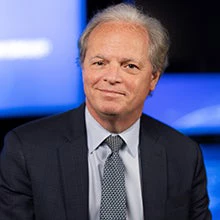We are now a year into implementation of IDA18, the three-year funding cycle for IDA, the arm of the World Bank Group that provides financing to the poorest countries. And IDA is off to a strong start. Total commitments reached $24.0 billion this year, more than double the average of the first year in IDA15 and IDA14. This is also over 40% higher than the average volume we saw for the first year of IDA16 and IDA17.
Part of the growth springs from how we set up IDA18, in response to calls from the G20 and international community for the World Bank Group to innovate in every way we can to help achieve the world’s Sustainable Development Goals for 2030. And despite extraordinary global challenges, our donors agreed to provide $27 billion in grant contributions to support IDA18’s $75 billion financing to client countries.
This is the largest amount in IDA’s 58-year history, and it means tangible results for the world’s poorest countries and most vulnerable people. By the end of IDA18’s funding cycle in June 2020, we expect to support, for example, essential health and nutrition services for up to 400 million people , immunizations for 130-180 million children, an additional 5 gigawatts of capacity to generate renewable energy, and teacher training to benefit over 300 million children.
IDA18 is different from earlier IDA replenishments in closely tying poverty reduction to economic growth, jobs and economic transformation, and sound governance –particularly progress on policy reforms – especially in low-income African and Asian countries. IDA18 also embraces the private sector in new ways.
For the first time, we are leveraging IDA’s equity and donor contributions to raise funds in the capital markets and provide additional resources to clients. In April, IDA launched its first-ever bond issue, a rousing success with $1.5 billion raised from 110 investors in 30 countries; it was 4.5 times oversubscribed. This new financing model allows IDA to bring in other financiers: bondholders, including central banks, sovereign wealth funds, private investors such as insurance companies and pension funds, and others. The leveraging effect is that for every dollar invested, IDA is able to commit $3. This adds to IDA’s resources and enhances our partnership with the private sector.
Just as importantly, IDA has set up a Private Sector Window (PSW) to work closely with IFC and MIGA, the World Bank Group’s private sector arms. This will catalyze an estimated $6-8 billion in private sector investments in the poorest countries, especially fragile and conflict-affected states. The approach helps mitigate uncertainties and risks for investors, enabling a commercial solution that complements other Bank Group tools and approaches. Our Board has already approved 13 PSW investments for projects that leverage $185 million of PSW resources and $609 million from IFC and MIGA to facilitate a further $800 from other financiers.
IDA18 has increased the IDA Regional Window, enhancing support for collective actions across a diverse range of regional solutions. In West Africa, for example, a regional program will bring many more people a government-recognized proof of unique identity, facilitating their access to services. Eight projects financed by the regional sub-window for refugees have Board approval, with many more in the pipeline.
IDA18 also expands the Crisis Response Window (CRW), which helps countries deal with severe economic shocks, natural disasters, and public health emergencies so that they can get development back on track. Already it has nimbly allocated $350 million in critical funding to four countries, helping address Yemen’s cholera outbreak, Mongolia’s economic shocks, and hard hits from hurricanes and cyclones in Dominica and Tonga.
IDA’s core strength is partnerships and how we work with other bilateral and multilateral agencies and national institutions, the private sector, and CSOs. We collaborate with other facilities to ensure quick response to emerging crises. In May, for example, IDA joined with the Pandemic Emergency Financing Facility (PEF) to combat an Ebola outbreak in the Democratic Republic of Congo. IDA provided US$15 million for financing free care, availability of drugs, hazard pay and logistics, and the PEF provided its first-ever financial commitment of $12 million. Also in May, the sub-window for refugees committed $130 million in additional financing to projects in Cameroon’s social sectors, helping the country provide essential support to about 350,000 refugees. To help refugees and host communities, we are also partnering with the UN High Commissioner for Refugees, UNICEF, the Red Cross, and other humanitarian agencies.
IDA18 also steps up support for projects to address climate change, and is on track to double commitments for renewable energy generation in client countries.
With IDA18 making such strong progress, we must continue to deliver for clients without losing momentum on our IDA priorities. We expect to see poverty become more concentrated in fragile and conflict-affected states, with many refugees fleeing to countries that already struggle to deliver basic services. Climate change will affect where people are able to live and work. Technology is evolving rapidly and transforming the nature of work in many sectors. And women will be highly exposed to all of these changes.
What will not change, however, is IDA’s unique value proposition. We have the mandate, cross-sector knowledge, and resources to be the partner of choice in addressing global challenges in ways that serve the world’s poorest countries. Our success hinges on ensuring that we provide strong support for policy reforms and have ability to innovate and work effectively both with donors and borrowers.
With strong support from our partners, we can maximize the use of IDA resources to help our client countries achieve long-term growth and build the capacity to ensure that their results remain sustainable and inclusive in the years to come.


Join the Conversation